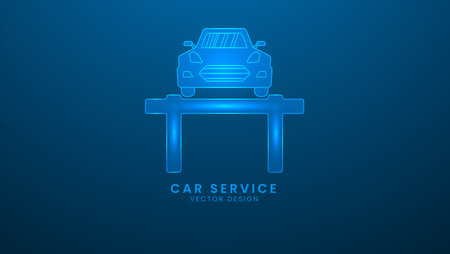Understanding Range Anxiety
For British motorists, the term ‘range anxiety’ has become increasingly familiar as electric vehicles (EVs) and hybrids roll onto UK roads. At its core, range anxiety refers to the fear or worry that a vehicle will run out of battery power before reaching a destination or charging point. This concern stands in stark contrast to traditional petrol or diesel vehicles, where filling stations are plentiful and refuelling takes just minutes. In Britain’s patchwork of bustling cities, winding country lanes, and remote rural stretches, drivers are especially sensitive to the limitations posed by EV battery ranges. The sense of unease is heightened by the unpredictable British weather and variable traffic conditions, which can further impact battery performance. Below is a comparison table highlighting the differences between conventional fuel vehicles and electric/hybrid cars regarding range considerations:
| Aspect | Conventional Fuel Vehicles | Electric/Hybrid Cars |
|---|---|---|
| Refuelling/Recharging Time | 3-5 minutes at any station | 30 mins – several hours depending on charger type |
| Availability of Infrastructure | Extensive network nationwide | Growing but still limited in rural areas |
| Mental Comfort for Long Journeys | High – rarely plan ahead for fuel stops | Lower – often require planning and route mapping |
This underlying worry makes range anxiety more pronounced in the UK than in some other countries with larger urban sprawls or more established charging networks. It’s not just about technology; it’s about peace of mind on everything from a daily commute in London to a weekend jaunt to the Lake District.
2. Driving Distances and Lifestyle in the UK
Understanding range anxiety in Britain starts with a look at how we use our cars. Unlike sprawling countries, the UK’s compact geography shapes driving habits, and this has a direct impact on how practical electric vehicles (EVs) and hybrids feel to everyday motorists.
Typical Daily Commutes
For most Brits, the daily drive isn’t exactly a cross-country adventure. According to Department for Transport statistics, the average UK car journey is just 8.4 miles, while even the daily commute averages around 23 miles each way. This means that for routine school runs, popping to the shops, or heading into town, the range of most modern EVs is more than sufficient.
| Journey Type | Average Distance (miles) | Typical Frequency |
|---|---|---|
| Commute (one way) | 23 | Daily (Mon-Fri) |
| School run | 4 | Twice daily |
| Grocery shop | 6 | Weekly/Biweekly |
| Countryside trip | 80+ | Monthly/Seasonal |
| Coastal getaway | 120+ | A few times a year |
Weekend Getaways and Road Trips
The real test for EVs often comes when families pile into their motors for those classic British escapes: weekends in the Lake District, jaunts to Cornwall, or visiting relatives up north. Here, concerns about charging infrastructure and range become more pronounced. While modern EVs boast ranges of 200 miles or more, unpredictable traffic (especially on Bank Holidays), hilly terrain, and detours through winding country lanes can eat into battery life.
The Role of UK Geography
The UK’s relatively short distances between major towns and cities mean that pure electric vehicles are theoretically well-suited for most journeys. However, the patchy distribution of rapid chargers—particularly away from motorways or in rural Scotland and Wales—can make some drivers think twice before setting off without a backup plan. Range anxiety is less about actual distance, and more about “what if I get caught out?” on an unfamiliar road or far from a charging point.
Lifestyle Impact on Perceptions of EV Viability
The quintessential British lifestyle—often a mix of short urban hops and occasional scenic adventures—means that hybrids and plug-in hybrids remain popular choices for many. They offer peace of mind with a petrol engine for backup when heading off-piste. For city dwellers or those sticking mostly to local routes, fully electric cars are increasingly viable as charging networks expand. But for those whose hearts are set on spontaneous trips to the seaside or exploring remote National Trust sites, confidence in EV technology still hinges on visible improvements in public charging infrastructure.
In summary, while typical UK journeys fall comfortably within most EV ranges, our love of road trips and variable geography keeps range anxiety alive in the national psyche—at least for now.

3. Charging Infrastructure Across Britain
When considering the shift to electric vehicles (EVs) and hybrids, one of the most pressing concerns for motorists in the UK is the availability and reliability of charging infrastructure. While range anxiety used to be fuelled by tales of stranded EV owners on rainy A-roads or remote rural byways, the landscape is changing rapidly thanks to a nationwide push for better charging solutions.
Assessment of Public Charging Stations
The UK has made significant strides in expanding its public charging network, especially in cities like London, Manchester, and Birmingham where fast-charging points are increasingly commonplace. Even so, differences remain between urban and rural coverage, which can affect travel plans for classic road trips or daily commutes alike. Heres a brief look at the current state of public charging availability:
| Region | Rapid Chargers per 100k People | Total Public Chargers |
|---|---|---|
| London | 12.5 | 11,000+ |
| South East England | 7.8 | 6,500+ |
| Northern Ireland | 2.1 | 400+ |
| Scotland (Rural) | 5.0 | 1,200+ |
This growth means that long-distance travel is now more feasible than ever with an EV, but drivers should still plan ahead—much as owners of vintage motors would once plot out petrol stops along winding B-roads.
Home Charging Capabilities
For many UK households, home charging is a practical solution that eliminates much of the day-to-day range anxiety. Installing a dedicated wall box charger allows overnight top-ups using off-peak electricity tariffs—a real throwback to the convenience of having your own garage petrol pump in the classic motoring era. However, not all homes have off-street parking, particularly in older terraced housing or urban flats common across Britain’s towns and cities.
Government Support for Expanding the Network
The government has recognised these challenges and introduced several schemes to support both public and private charging expansion. Initiatives such as the On-Street Residential Chargepoint Scheme (ORCS) provide funding to local authorities for curbside chargers in residential areas where driveways are rare. Furthermore, grants are available to help offset the installation costs for home charging points—a nod to making modern motoring accessible to all, not just those with the luxury of a private driveway.
Cities vs Rural Areas: Bridging the Gap
Despite progress, disparities remain between urban centres and rural communities. While city dwellers may enjoy a multitude of rapid chargers within walking distance, those living amidst rolling countryside or along coastal routes might find themselves reminiscing about the days when every village green boasted a fuel station. Ongoing investment aims to ensure no motorist—classic enthusiast or EV pioneer—is left behind as Britain accelerates towards a greener future.
4. How Hybrids and Plug-in Hybrids Tackle the Issue
For many British motorists, the thought of getting stranded on a rainy A-road or during a motorway jaunt because of a flat battery is enough to induce a spot of tea-induced anxiety. This is where hybrids and plug-in hybrids come into their own, offering a reassuring middle ground between traditional petrol power and full electric motoring. By blending internal combustion engines with electric motors, these vehicles offer both flexibility and peace of mind—a crucial factor for those who remember the days when a jerry can in the boot was standard kit.
Hybrids work by automatically switching between petrol and electric power, or combining both for improved efficiency. Plug-in hybrids (PHEVs), meanwhile, can be charged at home or at public charging points but still retain the trusty petrol engine for longer journeys. For UK drivers who often face unpredictable weather, traffic delays, and limited rural infrastructure, this dual-power solution means you’re less likely to be left high and dry.
Key Benefits of Hybrids and Plug-in Hybrids for UK Drivers
| Feature | Hybrid Cars | Plug-in Hybrid Cars |
|---|---|---|
| Electric-only Range | Typically 1-2 miles | 15-40 miles (model dependent) |
| Total Range (Petrol + Electric) | 400+ miles | 400+ miles |
| Charging Requirement | No external charging needed | Can be charged at home/public points |
| Freedom from Range Anxiety | High—petrol backup always available | Very High—petrol backup plus usable electric range |
A Practical Solution for British Lifestyles
The beauty of hybrids and PHEVs lies in their ability to adapt to different driving patterns. Whether you’re commuting into central London’s Ultra Low Emission Zone, nipping down country lanes in Yorkshire, or planning a weekend away in the Lake District, these vehicles provide reassurance that you won’t need to anxiously scan your sat nav for the nearest charger every few miles.
Cultural Fit: The Best of Both Worlds
Much like the classic Land Rover that could tackle both city streets and muddy fields, hybrids and plug-in hybrids offer versatility well-suited to the varied landscapes and driving needs across the UK. For drivers hesitant to make the full leap into electric motoring—and those with fond memories of simpler motoring pleasures—these cars are an ideal stepping stone, blending nostalgia for reliability with forward-thinking technology.
5. Modern Electric Vehicles and Battery Developments
In recent years, the electric vehicle (EV) scene in the UK has witnessed a remarkable transformation, largely driven by significant advancements in battery technology and a renewed focus on extending driving range. British motorists, often wary of venturing beyond city limits due to range anxiety, now find themselves with more compelling options than ever before. Major automakers rooted in British heritage—such as Jaguar Land Rover and MINI—are actively investing in new battery chemistries, rapid-charging infrastructure, and energy management systems tailored to the unique demands of British roads, from bustling motorways to winding rural lanes.
The table below highlights some key improvements and features found in modern EVs popular within the UK:
| Make & Model | Approximate Range (miles) | Charging Time (to 80%) | Distinctive British Feature |
|---|---|---|---|
| Jaguar I-PACE | 292 | 40 minutes (rapid charger) | All-wheel drive for countryside versatility |
| MINI Electric | 145 | 36 minutes (fast charger) | Compact size for urban navigation |
| Nissan Leaf (Sunderland-built) | 239 | 40 minutes (rapid charger) | Affordable & widely adopted across Britain |
This progress is not just about raw numbers; its about creating vehicles that fit into British life. Improvements in battery efficiency mean that drivers can now plan trips from London to Edinburgh or explore the Lake District without constant worry over charging points. Furthermore, government-backed initiatives such as the expansion of high-speed charging networks at motorway service stations have made long-distance journeys increasingly practical. The traditional concerns of cold weather performance and limited charging infrastructure are being addressed through innovations like pre-conditioning batteries and integrating chargers into common destinations such as supermarkets and train stations.
British manufacturers are also tapping into their legacy of engineering excellence—balancing nostalgia with innovation. Many models feature regenerative braking systems inspired by classic rally techniques, while interiors blend vintage charm with cutting-edge digital dashboards. As battery prices continue to fall and energy density rises, its becoming clear that the UK is rapidly steering towards a future where range anxiety may soon be little more than a fondly-remembered relic of early electric motoring.
6. Real-World UK Experiences and Tips
Nothing puts range anxiety into perspective quite like hearing from fellow British drivers who have embraced the shift to hybrids and electric vehicles (EVs). From the winding lanes of Cornwall to the busy streets of Manchester, EV users across the UK share stories that reflect both the challenges and solutions unique to our island nation.
Anecdotes from UK EV Owners
Take John from Kent, for example. He recalls his initial worry about making the 90-mile round trip to Brighton in his Nissan Leaf, only to discover a well-placed rapid charger at a motorway service station made his journey seamless. Or Priya in Edinburgh, who quickly learned the value of planning her route using apps like Zap-Map, ensuring she never found herself stranded on the A1.
Common Range Anxiety Scenarios & Solutions
| Scenario | UK Driver’s Solution |
|---|---|
| Long Motorway Trips | Use services with rapid chargers, plan coffee stops where you can top up your battery |
| Urban Stop-Start Traffic | Rely on regenerative braking to extend range; hybrids shine here with their dual power sources |
| Lack of Home Charging | Utilise workplace charging or public charge points; London boroughs often offer free overnight street charging |
Practical Tips for Navigating UK Roads in an EV or Hybrid
- Know Your Route: Before setting off, check your planned journey against available charging stations using local apps tailored for the UK.
- Embrace Off-Peak Charging: Many British energy providers offer cheaper rates at night—perfect for home charging.
- Leverage Hybrids for Rural Travel: If you frequent less populated areas, hybrids provide peace of mind thanks to their petrol back-up.
- Join Local EV Groups: Many towns now boast clubs or online forums where members share updates on new charge points or reliable locations—real community spirit at work!
The British Approach: Patience and Planning
The key takeaway from real-world UK experiences is quintessentially British: patience and a bit of forward planning go a long way. As infrastructure continues to improve, embracing these practical strategies will help even the most nostalgic motorist feel right at home behind the wheel of an EV or hybrid—rain or shine.
7. The Future of Range Confidence in the UK
The landscape for electric and hybrid motoring in Britain is shifting at a remarkable pace, and the future looks brighter than ever for those anxious about range. As we cruise towards a greener future, several technological advances, significant infrastructure investments, and evolving cultural attitudes are set to drive down range anxiety for UK motorists.
Upcoming Technologies: Batteries and Beyond
Modern electric vehicles (EVs) are benefiting from breakthroughs in battery chemistry, energy density, and rapid charging. Solid-state batteries, due to arrive within the next few years, promise not only longer ranges but also quicker charging times and improved safety—a true game changer for British drivers who frequent long stretches of the M1 or venture into remote corners of Scotland. Furthermore, vehicle-to-grid (V2G) technology will allow cars to serve as mobile power banks, creating a more robust national grid.
Infrastructure Investments: Powering Up Across the Isles
The government and private sector are investing heavily in public charging networks. From motorway service stations on the M25 to community hubs in rural Yorkshire, the number of fast chargers is multiplying rapidly. To illustrate progress:
| Year | Fast Chargers Installed | Ultra-Rapid Hubs |
|---|---|---|
| 2020 | 8,000+ | 150 |
| 2022 | 13,000+ | 350 |
| 2024 (est.) | 18,000+ | 600+ |
This growing network aims to ensure that no matter where you fancy a Sunday drive—be it Cornwall’s coast or the Lake District—you’ll never be too far from a charge.
Cultural Shifts: Adapting to an Electric Age
The British motoring public is embracing the EV revolution with typical pragmatism and charm. Clubs for classic car enthusiasts now host workshops on EV conversions; pub conversations turn from carburettors to kilowatts. Government incentives such as reduced road tax and congestion charge exemptions sweeten the deal, encouraging more drivers to make the switch.
A Glimpse Down the Road
The union of advancing technology, robust infrastructure, and cultural openness signals that range anxiety will soon be as outdated as worrying about points on your distributor cap. For British drivers—whether you’re clocking up miles on company business or taking the kids to Blackpool—the future promises real confidence behind the wheel of an EV or hybrid.


